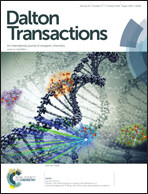3D reconstruction of atomic structures from high angle annular dark field (HAADF) STEM images and its application on zeolite silicalite-1†
Abstract
High-resolution transmission electron microscopy (HRTEM) has shown to be very powerful for solving three-dimensional (3D) structures of unknown crystals. HRTEM has a unique advantage over diffraction for solving structures. Crystallographic structure factor phases, which are lost in diffraction can be directly obtained from HRTEM images. For the determination of a 3D crystalline structure by HRTEM, the crystallographic structure factor amplitudes and phases extracted from HRTEM images along different zone axes are combined to reconstruct a 3D electrostatic potential map. In recent years, scanning transmission electron microscopy (STEM) has reached the atomic resolution, which is comparable to that of HRTEM. Here we show, for the first time, that the structure factor phases can be also obtained from high angle annular dark-field (HAADF)-STEM images and used for 3D reconstruction of atomic structures. This is applied to the complex zeolite structure, silicalite-1 (Formula SiO2, framework code MFI, Pnma, a = 20.090 Å, b = 19.738 Å and c = 13.142 Å). We have compared the amplitudes and phases obtained from HAADF-STEM images with those from HRTEM images.

- This article is part of the themed collection: Porous Materials (FEZA 2014)

 Please wait while we load your content...
Please wait while we load your content...